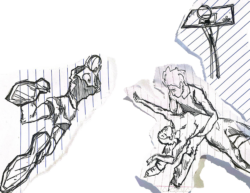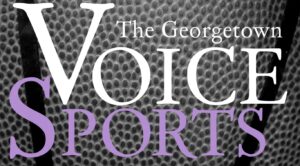In the NBA, the trade rumor mill starts churning every time an All-Star approaches the end of his contract. As such, this season’s headlines have been dominated not by exciting play on the court, but by the trade speculation surrounding Orlando Magic center Dwight Howard. The chatter is similar to last year’s, when the media obsessed over Carmelo Anthony’s demands to leave the Denver Nuggets. With the New York Knicks rotting below .500 in that trade’s aftermath, it’s time to ask whether this superstar-centered approach to team-building is effective for assembling a winning squad.
The Celtics launched this craze in the 2007 offseason, when they moved young talent and draft picks in exchange for two proven superstars, Kevin Garnett and Ray Allen, to play with Paul Pierce as the first “Big Three” in Beantown. The Celtics’ super team immediately won a title, and suddenly every franchise felt just a big move or two away from contending.
Many teams, however, applied their newfound optimism to an unconscionable level in hopes of mimicking Boston’s success. Managers gutted their teams of young talent and future draft picks to clear up cap space for a major signing in the lauded 2010 free agent class.
As the Miami Heat reeled in three of the top four free agents, however, the rest of the league was left quivering in fear for the decade to come. With the elite free agents off the market, teams like the Knicks and Nets were left to pay astronomical prices in the trade market for Carmelo Anthony and Deron Williams, while others were forced to plug holes with the scraps.
In certain cases, this works out pretty well—the Heat are poised to contend for a second consecutive NBA Finals appearance since their big offseason, showing that they’ve benefited from slashing their roster around Wade prior to the 2010 offseason. The Los Angeles Clippers, sitting second in the Western Conference, also succeeded with their acquisition of point guard Chris Paul, despite the high price levied on them by the league-owned New Orleans Hornets.
Nevertheless, the Heat, Clippers, and Celtics seem to be exceptions to the rule that the optimal approach to constructing a roster is not overpaying for superstars. The season so far has proven that teams do not need superstars to win. The Denver Nuggets have been among the NBA’s best since they shoplifted four Knicks starters in exchange for Anthony, and incorporated them into a deep roster devoid of elite players. The Philadelphia 76ers have opened up a huge lead over the Knicks and Nets in the Atlantic Division, despite featuring unheralded sixth man Lou Williams as their leading scorer. Both teams show that building depth through the draft and timely trades is a far more effective strategy than just cashing in for a superstar without the necessary compatible pieces.
Thus, while pairing two Hall of Famers with an all-star power forward, à la the Heat, is a semi-proven formula for success, simply building a team around stars with few supporting pieces is a haphazard and ineffective approach. So as teams position themselves to trade for Dwight Howard, they need to exercise caution—while he has the potential to instantly push a team into the NBA elite, without the necessary supporting cast, he could find himself on another empty roster.
Want to be on Dan’s superteam? Join at dkellner@georgetownvoice.com




